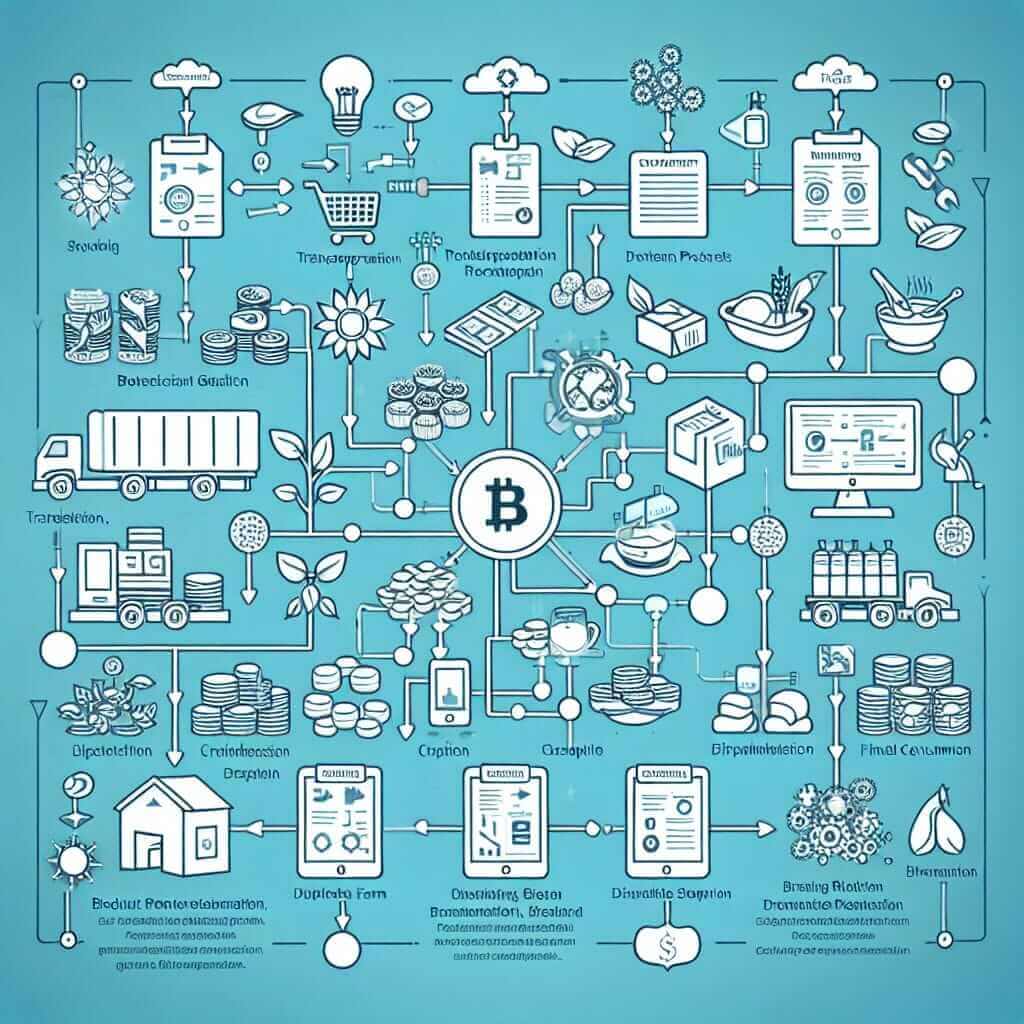The IELTS Reading section is a crucial part of the IELTS exam, requiring candidates to comprehend and answer questions based on various passages. In recent years, topics related to technology and its applications have gained prominence, making it essential for candidates to familiarize themselves with such subjects. One pertinent and timely topic is the use of blockchain technology in improving food safety. Given the increasing relevance of food safety, especially amid global supply chain disruptions, this topic is likely to appear in future IELTS exams.
Main Content
Reading Passage: Medium Text
Title: Enhancing Food Safety through Blockchain Technology
In recent years, blockchain technology has been hailed as a transformative tool across various industries, with food safety being one of the primary areas of application. Blockchain, a decentralized digital ledger system, records transactions in a way that ensures transparency, security, and traceability. By leveraging blockchain technology, stakeholders in the food supply chain—ranging from farmers to retailers—can significantly enhance food safety protocols.
One of the primary benefits of blockchain in food safety is its ability to provide immutable records. Each transaction, from farm to table, is recorded on a blockchain, ensuring that every step of the process is transparent and traceable. This transparency helps in early detection and resolution of food-related issues. For instance, if a batch of contaminated lettuce is detected, blockchain allows for rapid tracking of the product’s journey and pinpointing the source of contamination.
Moreover, blockchain helps in verifying the authenticity of food products. Counterfeit products, which pose significant health risks, can be easily identified and eliminated in a blockchain-enabled supply chain. This is particularly important for high-value products like organic foods and premium meats, where consumers are willing to pay a premium for guaranteed authenticity.
Additionally, blockchain technology facilitates better compliance with regulatory requirements. Governments and food safety agencies can access real-time data on food production and distribution, enabling more efficient monitoring and enforcement of safety standards. This not only enhances public health but also boosts consumer confidence in the food supply chain.
In comparison to traditional methods, blockchain offers a more efficient and error-proof system. Manual record-keeping can be prone to errors and fraud, whereas blockchain’s decentralized nature and cryptographic security ensure that data integrity is maintained. Consequently, businesses can avoid costly recalls and potential legal issues associated with food safety breaches.
Despite its numerous benefits, the adoption of blockchain in food safety is not without challenges. The technology requires significant investment in terms of infrastructure and training. Additionally, there is a need for industry-wide collaboration to establish standardized protocols and interoperability between different blockchain systems.
In conclusion, while there are hurdles to overcome, blockchain technology holds immense potential in revolutionizing food safety. By offering unparalleled transparency, traceability, and security, it can help create a more reliable and trusted food supply chain.
Questions
-
Multiple Choice:
- What is one primary benefit of blockchain technology mentioned in the passage?
A. It is cheaper than traditional methods.
B. It ensures transparency and traceability.
C. It does not require any training.
D. It replaces regulatory agencies.
- What is one primary benefit of blockchain technology mentioned in the passage?
-
True/False/Not Given:
- Blockchain can help eliminate counterfeit products.
- Blockchain technology is commonly used in all industries.
- The adoption of blockchain does not involve any significant costs.
-
Matching Information:
- Match the following terms with their correct descriptions:
- Blockchain
- Immutable Records
- Counterfeit Products
- Regulatory Compliance
- Match the following terms with their correct descriptions:
Answer Keys
-
Multiple Choice:
- B. It ensures transparency and traceability.
-
True/False/Not Given:
- True: Blockchain can help eliminate counterfeit products.
- Not Given: Blockchain technology is commonly used in all industries.
- False: The adoption of blockchain does not involve any significant costs.
-
Matching Information:
- Blockchain: A decentralized digital ledger system.
- Immutable Records: Transactions that cannot be altered once recorded.
- Counterfeit Products: Fake items that pose health risks.
- Regulatory Compliance: Adherence to rules and standards set by authorities.
Common Mistakes and Tips
- Overlooking Keywords: Candidates often miss crucial keywords in the passage or questions. It’s important to underline or highlight keywords and their synonyms as you read.
- Misinterpreting Information: Ensure you clearly understand the information before answering. Re-read sections if necessary.
- Time Management: Allocate time effectively to avoid spending too long on any one question. Practice timing to improve speed and efficiency.
Vocabulary
- Immutable (adj): /ɪˈmjuːtəbl/: Unchangeable or unalterable.
- Traceability (noun): /ˌtreɪ.səˈbɪl.ɪ.ti/: The ability to trace the history, application, or location of an entity by means of recorded identifications.
- Authenticity (noun): /ɔːˈθen.tɪk/: The quality of being genuine or real.
Grammar Focus
Present Perfect Tense:
- Structure: Subject + has/have + past participle.
- Example: Blockchain has transformed food safety protocols.
Advice for High IELTS Reading Scores
- Practice Regularly: Regular reading practice helps in improving comprehension skills and vocabulary.
- Simulate Exam Conditions: Take timed practice tests to get accustomed to the pressure of the actual exam.
- Expand Your Vocabulary: Learn new words daily, especially those related to common IELTS topics such as technology, environment, and society.
- Analyze Mistakes: Review your incorrect answers to understand your mistakes and learn from them.
 blockchain technology in food supply chain
blockchain technology in food supply chain
By implementing these strategies and practicing with realistic passages like the one provided, you can enhance your chances of achieving a high score in the IELTS Reading section.


